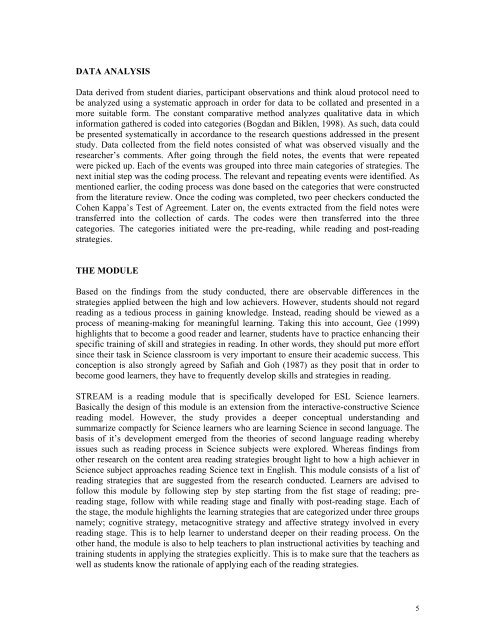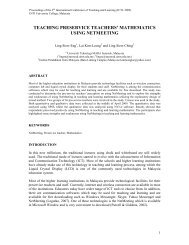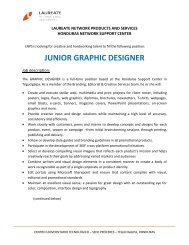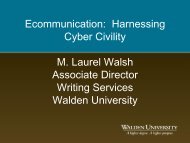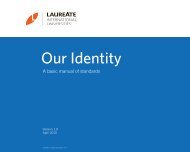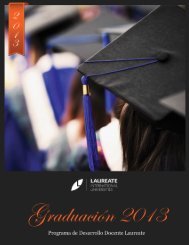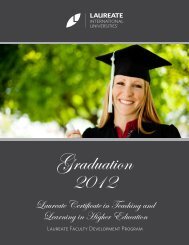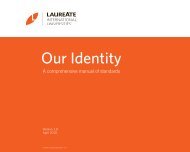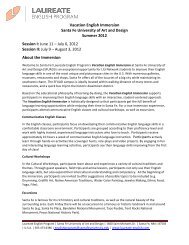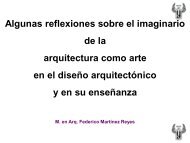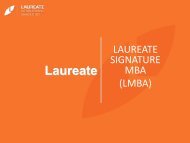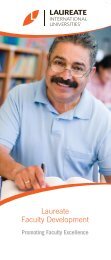3A-02-P88 (Malaysia) - My Laureate
3A-02-P88 (Malaysia) - My Laureate
3A-02-P88 (Malaysia) - My Laureate
Create successful ePaper yourself
Turn your PDF publications into a flip-book with our unique Google optimized e-Paper software.
DATA ANALYSISData derived from student diaries, participant observations and think aloud protocol need tobe analyzed using a systematic approach in order for data to be collated and presented in amore suitable form. The constant comparative method analyzes qualitative data in whichinformation gathered is coded into categories (Bogdan and Biklen, 1998). As such, data couldbe presented systematically in accordance to the research questions addressed in the presentstudy. Data collected from the field notes consisted of what was observed visually and theresearcher’s comments. After going through the field notes, the events that were repeatedwere picked up. Each of the events was grouped into three main categories of strategies. Thenext initial step was the coding process. The relevant and repeating events were identified. Asmentioned earlier, the coding process was done based on the categories that were constructedfrom the literature review. Once the coding was completed, two peer checkers conducted theCohen Kappa’s Test of Agreement. Later on, the events extracted from the field notes weretransferred into the collection of cards. The codes were then transferred into the threecategories. The categories initiated were the pre-reading, while reading and post-readingstrategies.THE MODULEBased on the findings from the study conducted, there are observable differences in thestrategies applied between the high and low achievers. However, students should not regardreading as a tedious process in gaining knowledge. Instead, reading should be viewed as aprocess of meaning-making for meaningful learning. Taking this into account, Gee (1999)highlights that to become a good reader and learner, students have to practice enhancing theirspecific training of skill and strategies in reading. In other words, they should put more effortsince their task in Science classroom is very important to ensure their academic success. Thisconception is also strongly agreed by Safiah and Goh (1987) as they posit that in order tobecome good learners, they have to frequently develop skills and strategies in reading.STREAM is a reading module that is specifically developed for ESL Science learners.Basically the design of this module is an extension from the interactive-constructive Sciencereading model. However, the study provides a deeper conceptual understanding andsummarize compactly for Science learners who are learning Science in second language. Thebasis of it’s development emerged from the theories of second language reading wherebyissues such as reading process in Science subjects were explored. Whereas findings fromother research on the content area reading strategies brought light to how a high achiever inScience subject approaches reading Science text in English. This module consists of a list ofreading strategies that are suggested from the research conducted. Learners are advised tofollow this module by following step by step starting from the fist stage of reading; prereadingstage, follow with while reading stage and finally with post-reading stage. Each ofthe stage, the module highlights the learning strategies that are categorized under three groupsnamely; cognitive strategy, metacognitive strategy and affective strategy involved in everyreading stage. This is to help learner to understand deeper on their reading process. On theother hand, the module is also to help teachers to plan instructional activities by teaching andtraining students in applying the strategies explicitly. This is to make sure that the teachers aswell as students know the rationale of applying each of the reading strategies.5


